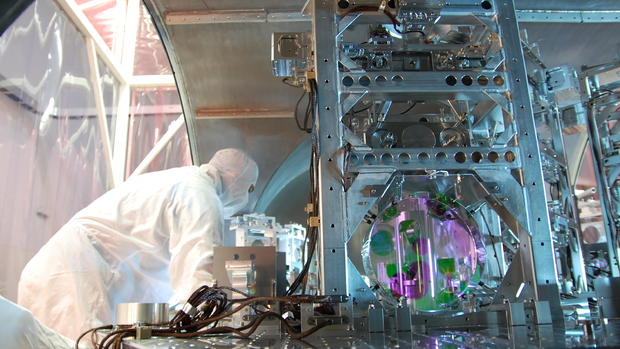Scientists to announce "groundbreaking result" in black hole telescope project
Astronomers say a major announcement is on the way based on findings from the international Event Horizon Telescope project, which experts believe could be the first-ever photographs to show the surroundings of a black hole. On Wednesday, April 10, the Event Horizon Telescope team will be holding multiple press conferences around the world to announce a "groundbreaking result" in their study of black hole environments.
The Event Horizon Telescope is an international collaboration that aims to capture images of black hole areas by linking up various radio dishes from around the world that together create a virtual telescope roughly the size of planet Earth. The project began capturing data in 2006.
Scientists from the U.S., France, and the Netherlands will be making their announcement Wednesday at the National Press Club in Washington, D.C, while related press conferences will occur simultaneously in Brussels, Santiago, Shanghai, Taipei, and Tokyo.
By creating a massive virtual telescope, the Event Horizon Telescope project aims to generate enough magnifying power to bring black hole environments into focus, allowing for the study of their characteristics. Because black holes do not emit light, they cannot be seen and are technically invisible. Instead, the Event Horizon Telescope looks to study areas surrounding a black hole, namely the gas which radiates around it due to its intensely strong gravity pull, in an attempt to capture images of its general dynamics.
Black holes are regions within the fabric of outer space that have such strong gravitational pulls that nothing, whether it be mass particles or light waves, can escape from it. The point within the black hole which nothing can escape from is called its event horizon. Scientists believe black holes form out of the remains of recently collapsed stars, which pull in all mass and light from its surrounding areas to grow bigger, and that supermassive black holes form the center of most galaxies, creating gravitational forces that link the various stars together.
The size of any black hole is always proportionate to its mass, so some may only be a few times the mass of our sun, which are called stellar black holes, while others are millions or billions of times the mass of the sun — supermassive black holes believed to anchor the constellations of galaxies.
The Event Horizon Telescope project has pinpointed two supermassive black holes to study: Sgr A*, which lays at the heart of our Milky Way galaxy, and M87, a giant elliptical galaxy located in the constellation Virgo.





